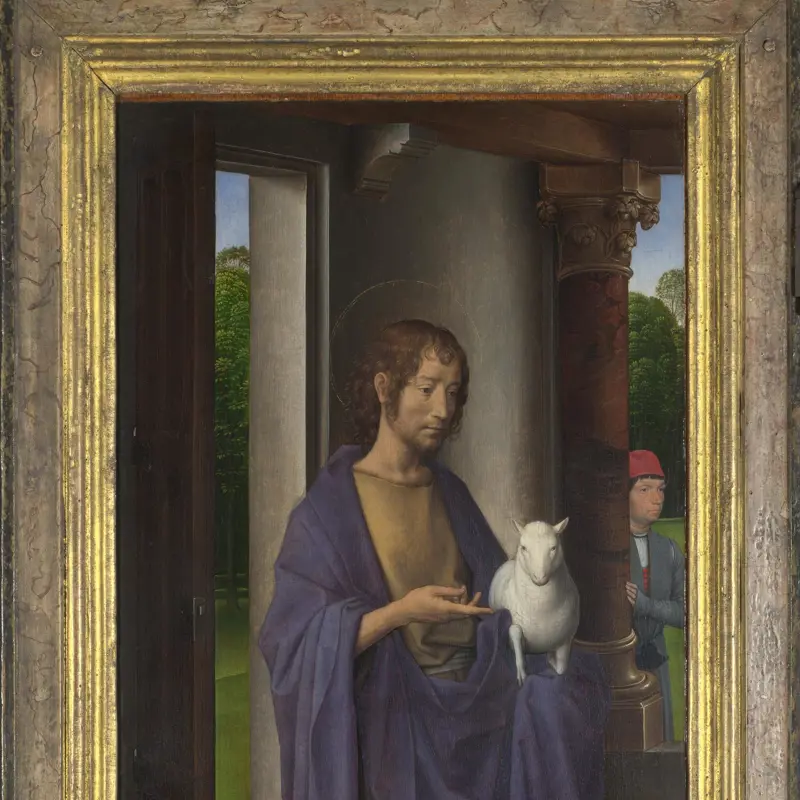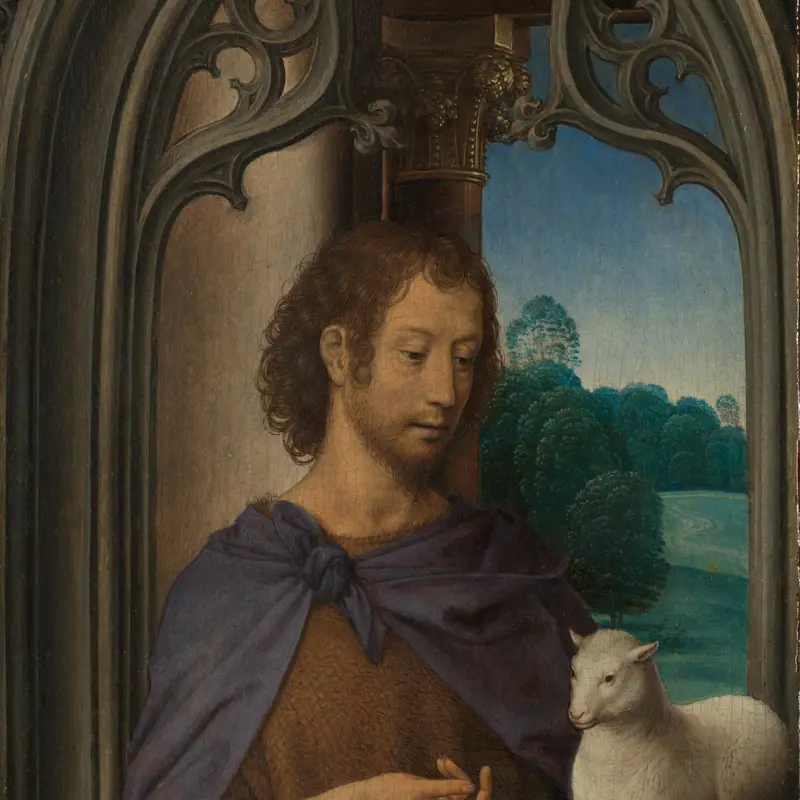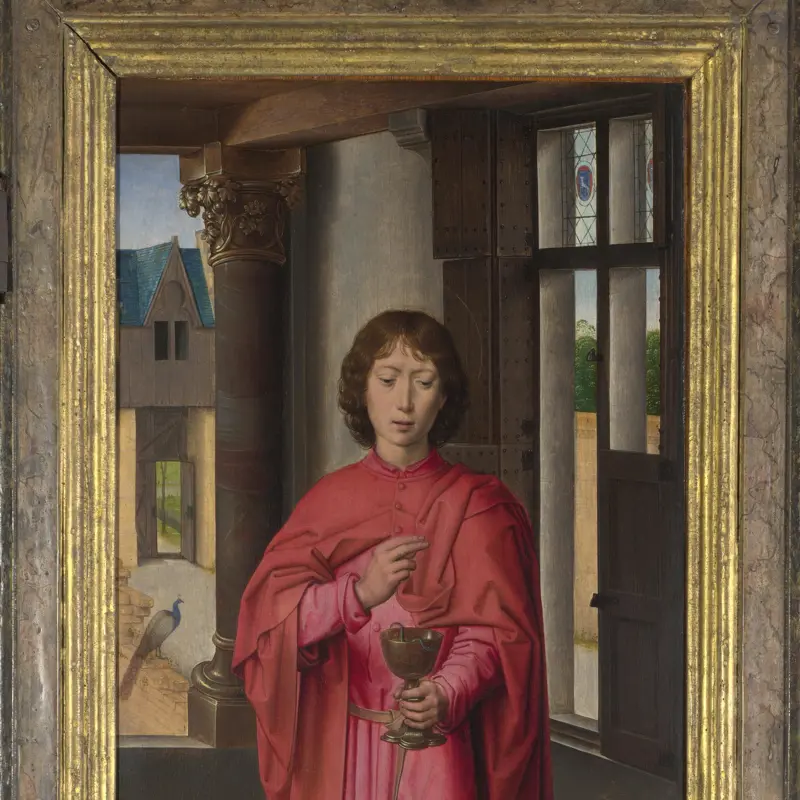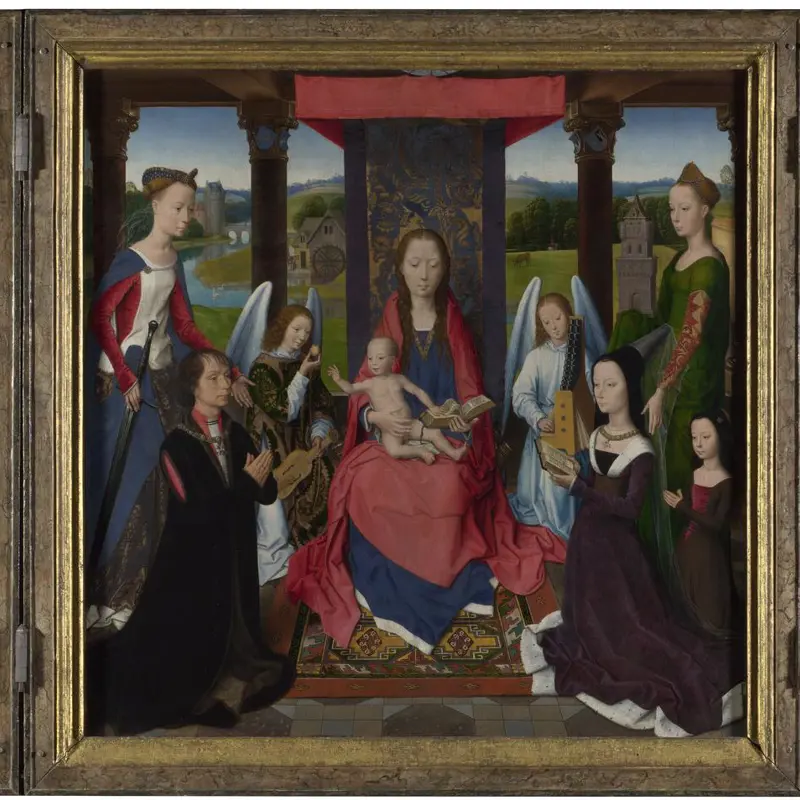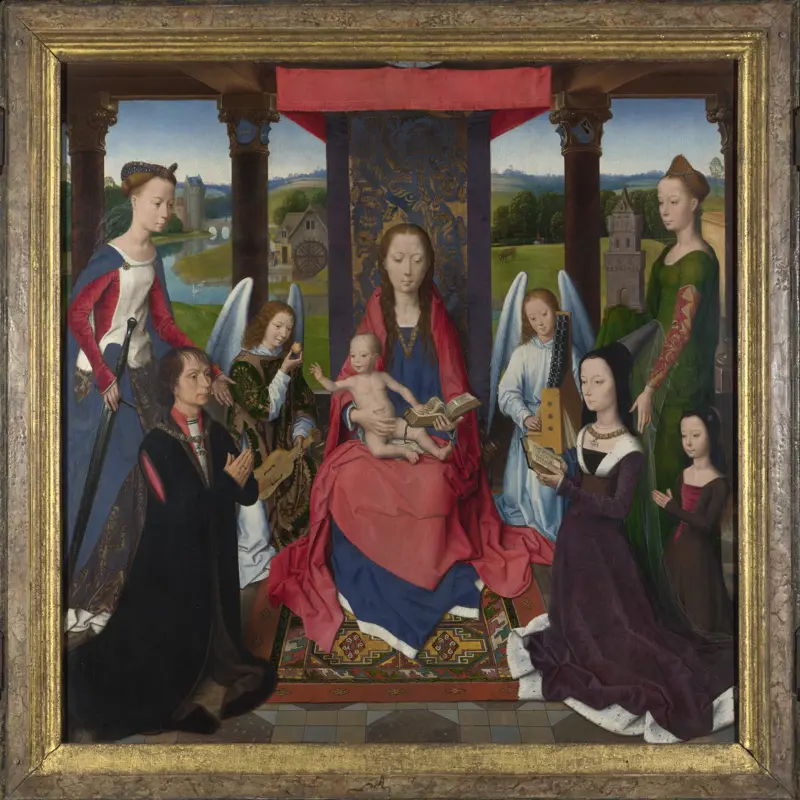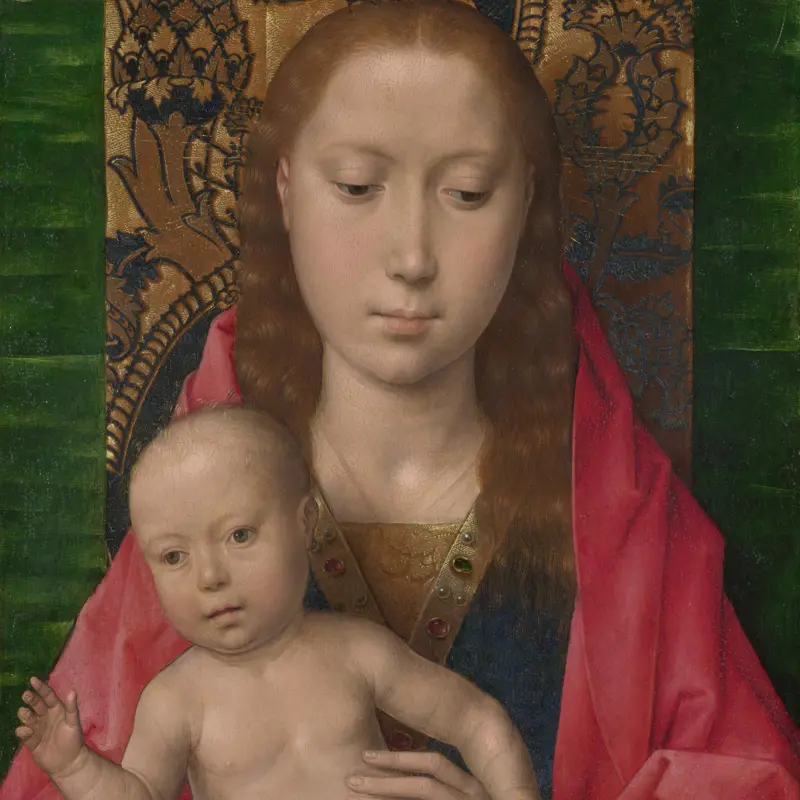Hans Memling, 'The Virgin and Child with an Angel', about 1480
About the work
Overview
The Virgin Mary and Christ Child are enthroned beneath a canopy and before a cloth of honour of the kind displayed behind medieval kings and queens.The naked child is balanced on her knee and crumples the pages of an open book. The unidentified donor kneels on the right: he was presumably called George as Saint George stands behind him, the limp and lifeless body of the dragon that he killed is at his feet.
Memling ran a large workshop, and certain oddities in the composition – the way the Christ Child reaches out towards nothing, for example – might indicate that this is the work of an assistant. But technical analysis suggests an alternative explanation. The painting was done very quickly and there are many changes between the underdrawing and the final painted version, including the head of the donor. The picture may be attributed to Memling himself, perhaps working under unusual constraints, for a difficult and impatient client.
Key facts
Details
- Full title
- The Virgin and Child with an Angel, Saint George and a Donor
- Artist
- Hans Memling
- Artist dates
- active 1465; died 1494
- Date made
- about 1480
- Medium and support
- oil on wood
- Dimensions
- 54.2 × 37.4 cm
- Acquisition credit
- Bought, 1862
- Inventory number
- NG686
- Location
- Not on display
- Collection
- Main Collection
Provenance
Additional information
Text extracted from the ‘Provenance’ section of the catalogue entry in Lorne Campbell, ‘National Gallery Catalogues: The Fifteenth Century Netherlandish Schools’, London 1998; for further information, see the full catalogue entry.
Exhibition history
-
2017Reflections: Van Eyck and the Pre-RaphaelitesThe National Gallery (London)2 October 2017 - 2 April 2018
-
2018Truth and Beauty: The Pre-Raphaelites and the Old MastersLegion of Honor (Fine Arts Museums of San Francisco)30 June 2018 - 30 September 2018
-
2019Making a Masterpiece: Bouts and Beyond, 1450-2020York Art Gallery11 October 2019 - 26 January 2020
Bibliography
-
1909K. Voll, Memling: Des Meisters Gemälde, Stuttgart 1909
-
1934R.N.D. Wilson, The National and Tate Galleries, London 1934
-
1945Davies, Martin, National Gallery Catalogues: Early Netherlandish School, London 1945
-
1953M. Davies, The National Gallery, London, Les Primitifs flamands. I, Corpus de la peinture des anciens Pay-Bas méridionaux au quinzième siècle 3, 2 vols, Antwerp 1953
-
1955Davies, Martin, National Gallery Catalogues: Early Netherlandish School, 2nd edn (revised), London 1955
-
1967M.J. Friedländer, Early Netherlandish Painting, eds N. Veronée-Verhaegen and H. Pauwels, trans. H. Norden, 14 vols, Leiden 1967
-
1983J. Mills and R. White, 'Pictures Cleaned and Restored in the Conservation Department of the National Gallery, January 1982 – December 1982', National Gallery Technical Bulletin, VII, 1983
-
1983J. Mills, Carpets in Paintings (exh. cat. The National Gallery, 1 June - 24 July 1983), London 1983
-
1987Davies, Martin, National Gallery Catalogues: The Early Netherlandish School, 3rd edn, London 1987
-
1993D. Martens, 'La "Madone au trône arqué" et la peinture brugeoise de la fin du Moyen Âge', Jahrbuch der Berliner Museen, XXXV, 1993, pp. 129-74
-
1998Campbell, Lorne, National Gallery Catalogues: The Fifteenth Century Netherlandish Paintings, London 1998
-
2001
C. Baker and T. Henry, The National Gallery: Complete Illustrated Catalogue, London 2001
About this record
If you know more about this work or have spotted an error, please contact us. Please note that exhibition histories are listed from 2009 onwards. Bibliographies may not be complete; more comprehensive information is available in the National Gallery Library.


